Hiking Japan’s Holy Pilgrimage, Kumano Kodo

How in God’s Name did I hear about this virtually unknown trail, the Kumano Kodo?
Well, I first stumbled upon this off-the-beaten-path pilgrimage when I worked for the Japanese government and found this photo on a pamphlet:

Something about it captivated me. Maybe it was the bizarre costume/pilgrimage outfit that is so ancient, even my knowledge from four years of Japanese language and culture classes left me in the dark. Perhaps the fact that it was one of only two UNESCO recognized pilgrimages in the world appealed to me, and I was dying to check ‘pilgrimage’ off the bucket list.
Either way, I knew my next trip to Japan would definitely have Kumano Kodo in the itinerary.
Two years later….
I was planning a trip to Japan and the brochure came back to mind. I spent hours, no, perhaps weeks planning Kumano Kodo because it was very hard to find information online. I was hoping I would stumble on some travel blog that would give me advice on how to do Kumano Kodo, but instead all I could find was this Australian travel company that offers Kumano Kodo tours for 8,000 dollars. Madness. (And trust me, you do NOT need 8 grand to do this hike).
After a one-hour train ride from Osaka and a bus ride from the city of Kii-Tanabe, we were dropped off in the middle of nowhere. Seriously. Rice fields and mountains as far as the eye can see. No other sign of humanity.
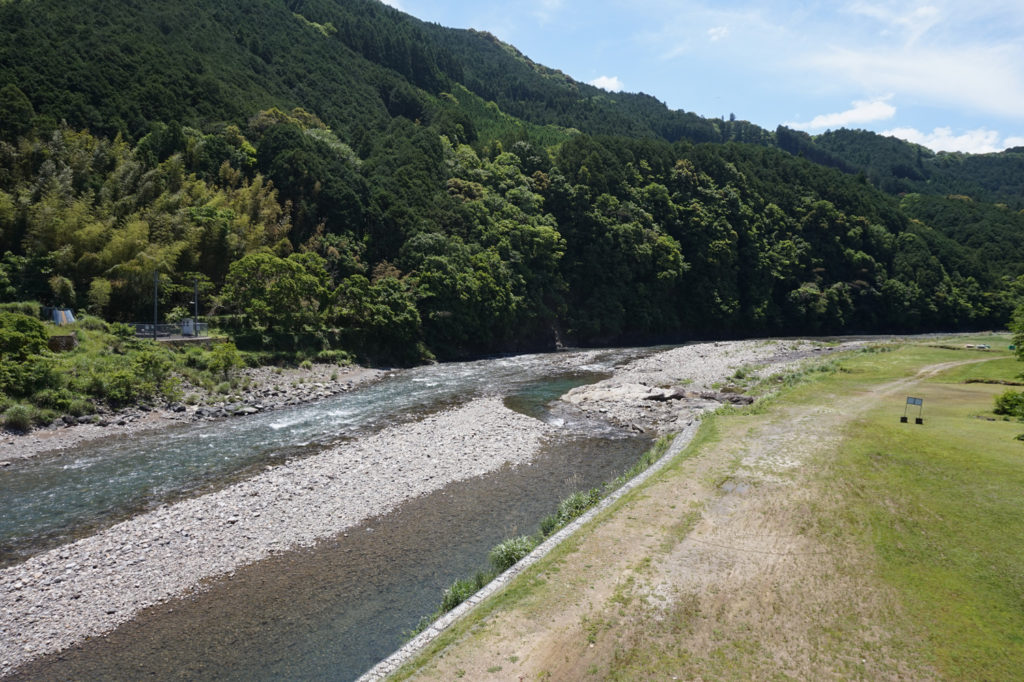
We blindly walked into the forest and, from the look of the trees, I knew I just stumbled into that brochure I picked up two years ago from the sheer amount of cedars in every direction. We definitely made it on the trail.


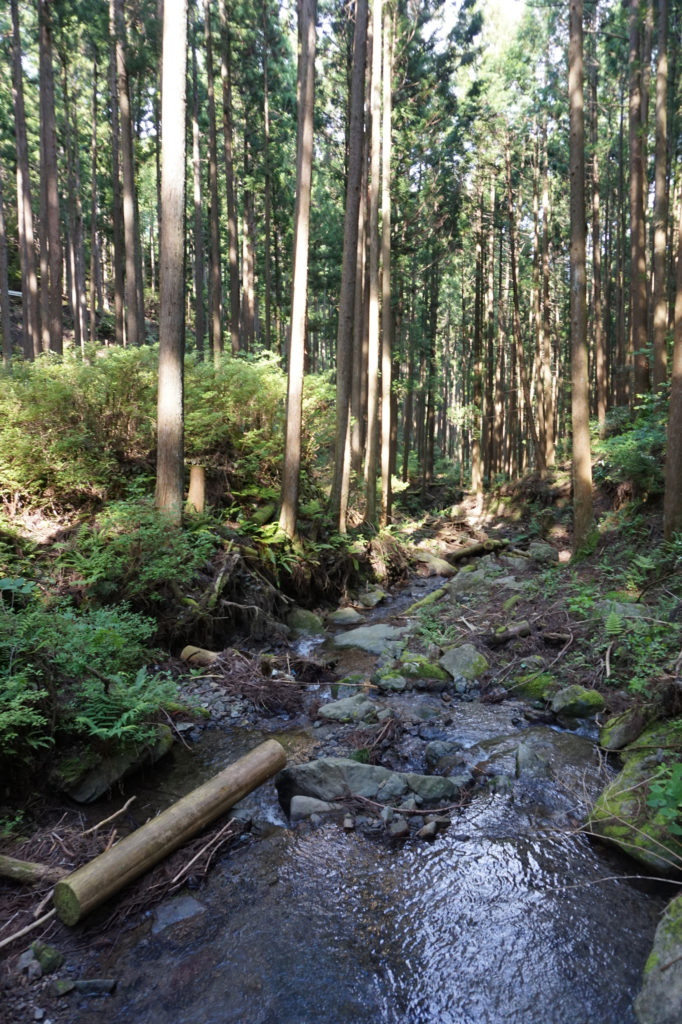
The Japanese countryside is truly a treasure. Whenever I step into these fairy tail villages nestled in the hillsides, I’m struck with such adoration and envy of the Japanese people. Kumano Kodo is filled with communities speckled into the picturesque countryside alongside rice paddies and filled with houses that probably haven’t changed much since the first pilgrims passed through here in 700 BC. The locals farm, plant rice, drink barley tea in the hot afternoon sun, laugh, gossip and, quite frankly, enjoy life and make me jealous.
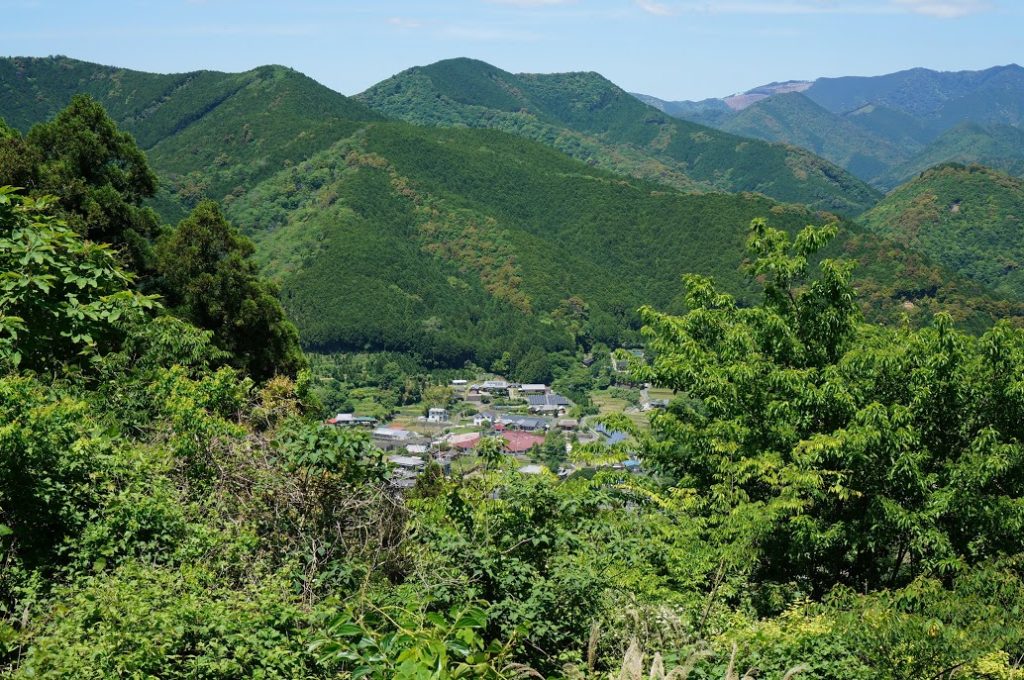


Wouldn’t it be nice to just live the simple life? I thought, as I stared out into to the cascade of mountains blanketed in trees. What if I could wake up to this everyday? Forget about getting a job, moving up the corporate ladder and achieving fame—I just need these trees, this fresh air, nature and a small community. Now that’s the life.




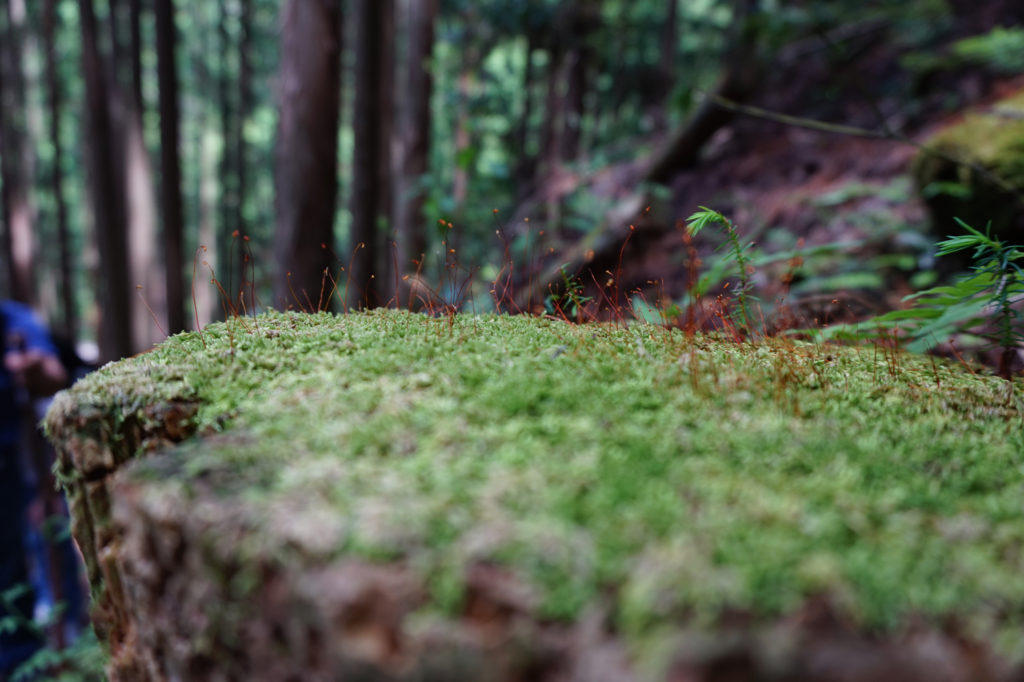
A Tough Hike, But With Damn Fine Dining
Kumano Kodo was brutal. Basically, we hiked from the east end of Wakayama Prefecture to the west end of it. This 25 plus mile hike through the Kii Mountain Range is not for the faint of heart! We hiked 8 hours, non-stop, for three days straight… and it hurt. Oh god, did it hurt.
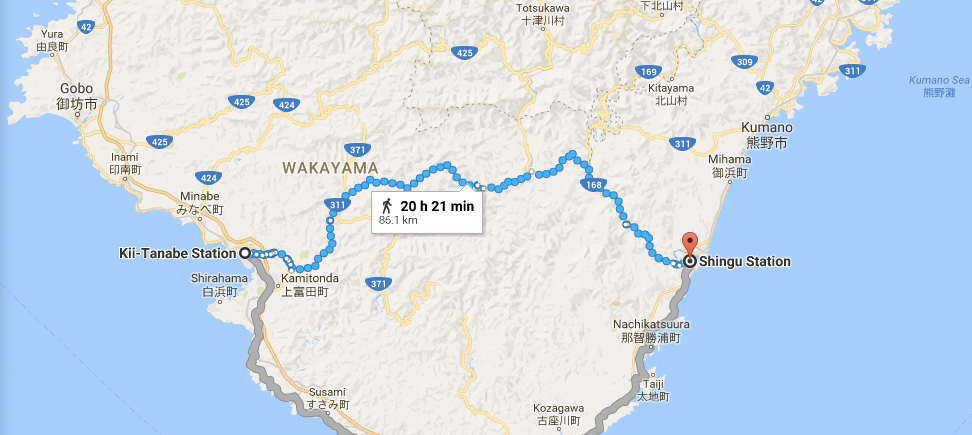
Japanese hospitality and service also didn’t fail to impress me on our humble pilgrimage. Instead of camping we lodged at minshuku, which are small bed and breakfast type joints run by the locals to accommodate pilgrimage hikers. The service blew me away and often times went above and beyond what I receive at many 4-5 star hotels. The old couples running the minshuku asked us what time we wanted breakfast and dinner so they could make it fresh. They provided maps in English and drove us to nearby trailheads. The boisterous grandma sent us out the door with a handful of chocolate and a big smile on her face.

And the food. Oh my god. The local minshuku owners cooked up fresh fish caught the day of, served us vegetables from their own garden and rice harvested from their fields. I ate like a king.
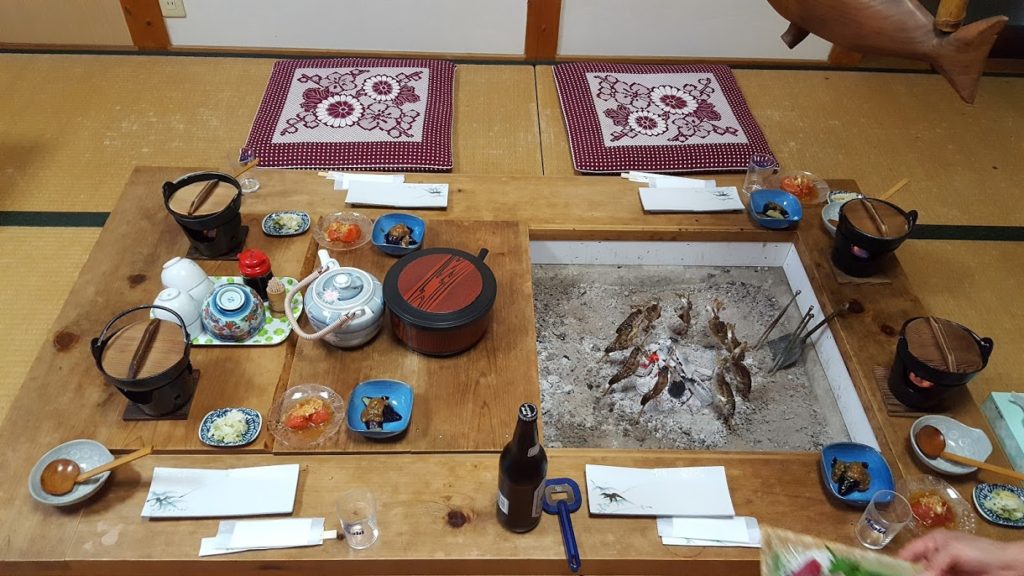


When I reached the end of the pilgrimage and exited the forest of eternal cedars, I felt like I had discovered another part of Japan and, really, a new part of myself. In Shinto tradition, I walked up to the Hongu shrine altar, threw in a coin, bowed, clapped twice and bowed again.


Although I’m not religious (raised Catholic, but I’m a terrible one), there is something about the Shinto religion that makes me feel at peace with the world. To believe in Shinto means to worship nature and the land of Japan itself. Just as monks and emperors had done for thousands of years past, I ventured into Japan’s holy land and stood at the same place they did so long ago to offer my prayers and gratitude. I was keeping the tradition alive.



I visited all three of the holy Kumano Sanzan Shrines that mark the end of the pilgrimage, with Nachi Taisha, the big, red-lacquered one with the jaw-dropping 133-meter tall waterfall backdrop, being my personal favorite.


As I hiked the Kumano Kodo and visited the shrines, I felt a deep respect for the Japanese people. Despite the industrial revolution and the change that modern age brings, the Kumano region and the traditions they practice are still just as intact as they were thousands of years ago. The island on the Kumano River that Amaterasu (the Zeus of Shintoism) supposedly stepped on to create the world, is still so holy no one has been allowed on it EVER. The fire festival, the boat festival, and all festivals in honor of the gods are still performed by the local Kumano community on an annual basis.
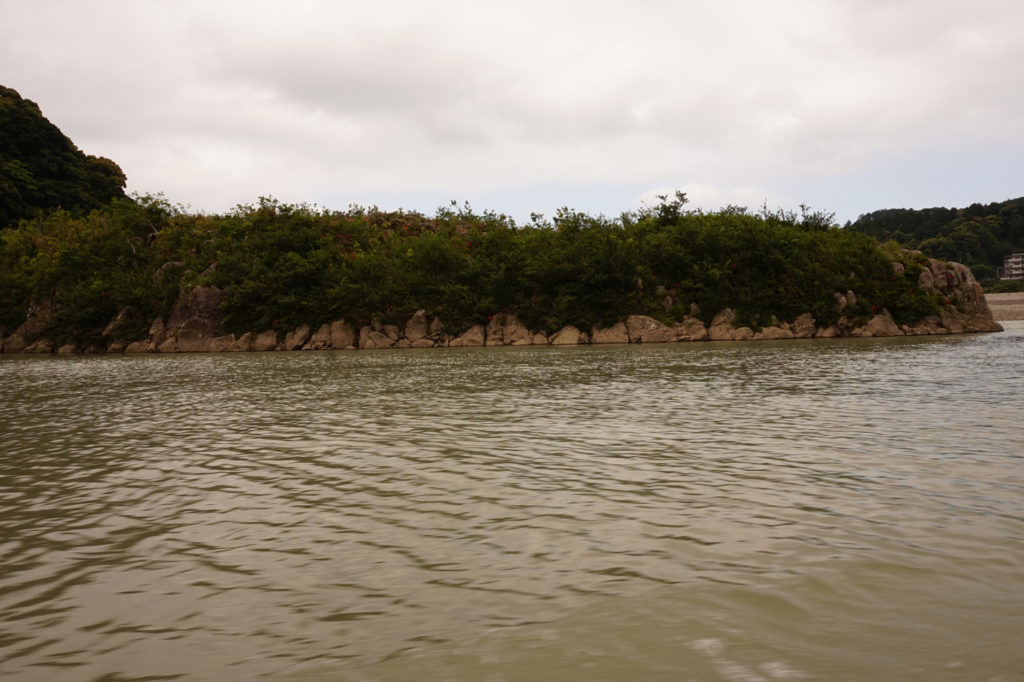
I’ve been a lot of places in Japan (Nagano, Niigata, Hiroshima, Takamatsu—I mean, the list goes on and on), but Kumano Kodo really hit me in an unexpected way. Julia Roberts may go to Bali (and hey, maybe my younger self too) for her Eat, Pray, Love moment; but instead, perhaps, those lost souls should go through Kumano Kodo for answers to all of life’s hard questions. Nothing makes you more grounded than walking a silent trail filled with cedars, bubbling brooks, bright green moss, a sea of mountains—and the Japanese gods watching over you.
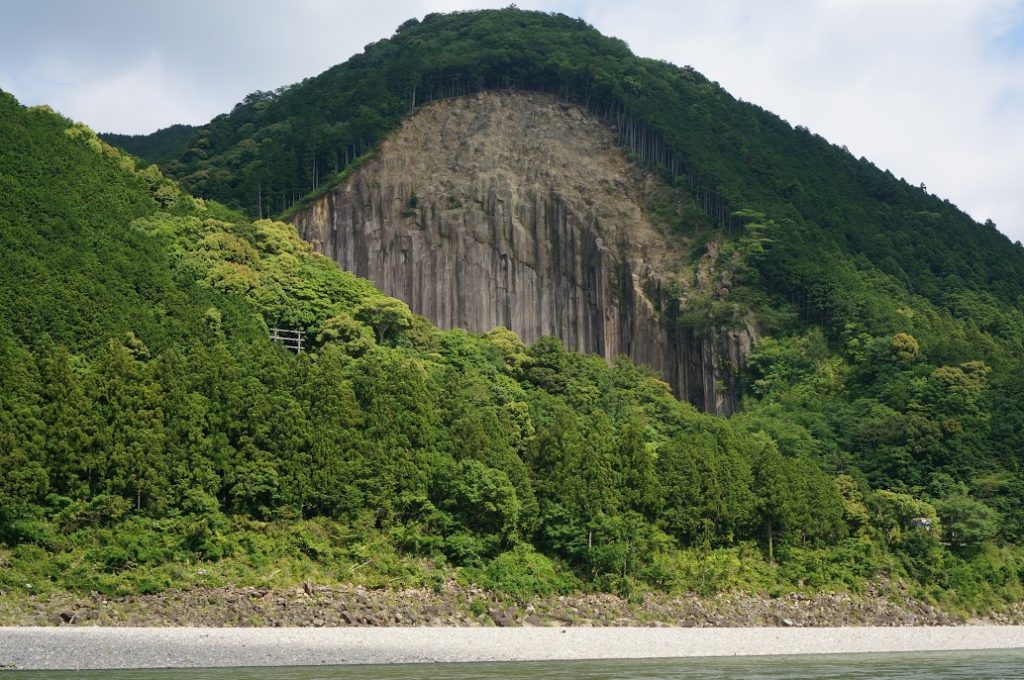

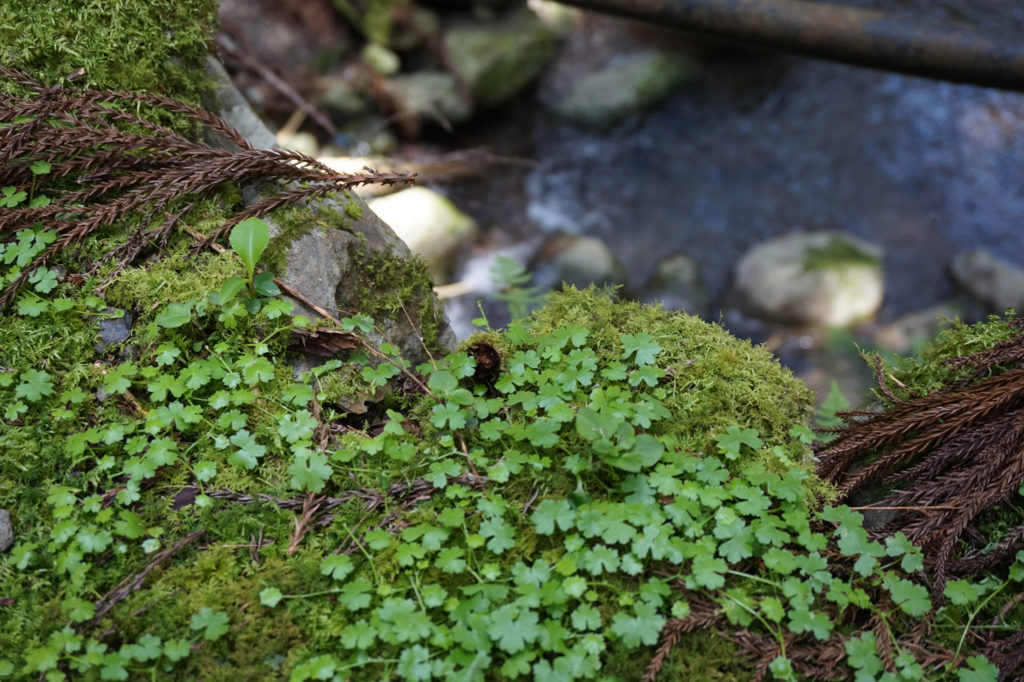
Boyfriend and I voted Kumano Kodo the best destination of our Japan trip. It’s peaceful, genuine, filled with stunning nature and almost void of tourists—what more can you ask for?

The Kumano Board of Tourism does an EXCELLENT job of giving advice to prospective travelers, as well as assists foreigners in booking local minshuku accommodations (filling in for that language barrier, god bless!). Even with their help, though, I had a difficult time planning the trip and will write a ‘how-to’ post later for the very small sliver of people that plan on doing this epic hike.
Also, if you’re keen to learn more about Shintoism, check out Buri-chan’s original manga adaptation of the Kojiki! It’s AMAZING! The Kojiki is the oldest text in Japanese history, supposedly written in 600 BC, and is the creation story of Japan itself—Greek god style.
31 thoughts on “Hiking Japan’s Holy Pilgrimage, Kumano Kodo”
Your hike looks incredible and peaceful and awesome. I want to do that. Only maybe can I take 4 days? Or a week or something?
You can totally do it in 4 days! But I’d take a week so, you know, you can get over jet lag and what not. I think you’d love Japan, Autumn!
Awesome writeup! Glad you enjoyed your trip. 🙂 I live out here and enjoy the trail often. And no, you don’t need $8000, lol. May I ask what your projected and actual budget were? Was there any more information that you wanted beforehand, or anything that would have been useful during the trip?
Wow you live in Kumano Kodo!?! You lucky man, you’re living my dream! My budget was quite small, under 400, and I think that’s really more than enough. The minshuku costs are 150ish/night and include breakfast, bento lunch and dinner, and really, that’s all you need to pay for (the trail is free to get into, wahoo!). I thought the Kumano site was super helpful, I guess for me it was wondering how long each trail would take and the difficulty involved, since I was on a tight schedule. I emailed the Kumano tourism board multiple times for answers and that was a huge help. Google Maps would say that one route would take only 4 hours, for example, but when I confirmed with the tourism board they said it was actually 7 hours if you were gunning it… so, things like this are good to know when you’re trying to get through the trail in 3 days.
Thanks for your comment!
It looks so beautiful. And the food is so cute. Look at those rice balls! However I am not sure about walking that much, I’ve never done it! Maybe I would die…
There is a very famous pilgrimage in Spain, Camino de Santiago. Many people do it, but I’ve never tried.
Haha I know, the rice balls were super yummy!! And I think you’d be ok, luckily the trail wasn’t too steep so I didn’t feel like I was going to pass out.
I heard about the Camino de Santiago, that’s actually the OTHER UNESCO world heritage pilgrimage, haha. If you do kumano kodo and the camino de santiago you get a special badge or something…?? They’re pilgrimage partners! I heard Camino de Santiago is a lot longer (like you need 2 weeks to do it?) and more flat without trees. Still, it’s a goal for a lot of people out there! It sounds way hardcore, more than Kumano!
Oh, is it UNESCO? I had no idea hahaha. There are actually several roads to do it, you can walk from southern Spain to Santiago (in the north west) or from the east (I think it even starts in France) to the west. People can actually choose how much they want to walk as you can start in any of the stages in the middle. So, if you want, you can walk for 1000 kilometers, or just for 100. I think 100 is the minimum to get the badge (yes, there is a badge, it’s actually a seashell, although I don’t know if you can always get it or only on special years).
Excellent post. It makes me want to learn more about Japan and its history. Thanks for sharing.
Yay I’m so glad! Please, look into it!
Great write up, Mary. The accommodation at the local minshuku was value for money and the service was top quality. Were the paths clearly marked?
Thank you! Glad you enjoyed it 🙂
Yeah minshukus are a great value and I’d recommend them to anyone. The only problem with them is the hosts usually don’t speak English (and they usually don’t have a website of any kind) so it can be hard to book the room or communicate.
The trail was very clearly marked. There were two time where I had to scratch my head at a fork in the road, but usually the road would rejoin later on or there would be signage telling me to go back. Definitely worth it!! I recommend it 100x over.
Love! I’m following in your footsteps one day, Mary. I swear it. Truly stunning. Nature worshippers unite. And I agree, them other folks can have Eat, Pray, Love any day…I’m all for peace, trees and a trail. xxoo
Yes Lani you would love it! It wasn’t all that expensive either (since, you know, hiking is free!) and it’s completely free to get INTO the park (don’t need to pay for a pass like in the USA for national parks).
I hope you can make it to Japan soon! 🙂
This sounds like such a cool trip! The Kumano Kodo is still on my to-do list for Japan adventures^^ Did you meet many other travellers on your way?
There were quite a bit of travellers, maybe we encountered 20-30 total? There’s not a ton, but there’s definitely a fair amount. I was surprised to see that most travellers are foreigners! You would take such amazing photos there hanna!
wow thats pretty cool, Ill have to check it out. I could do the 25 miles in 2 days, I can hike anything. I love the Japanese countryside, its like another country. I abhore Tokyo and surrounding areas but Japan countryside is really nice. Around shizoka there are many gems like this as well. How far is this from Tokyo? Im guessing its a min. 20,000 yen trip
Those cliff faces look like they might of been a quarry before. There is a place in Chiba, Mt. Nokogiri take the ferry, from kurihama and you arrive at a mountain like that. The ferry ride itself, if not crowded is quite fun. There is a very large Buddah, I guess the biggest in Japan, almost the same as the one in Kamakura, and many caves.
Ive often wondered what those inaka Japanese do for a living, and what they think of Tokyoites etc because they are 2 different worlds. Its the Japan I reccomend to anyone. Ive seen rats the size of my forearm and filth in Tokyo areas that makes it a kind of hell. I dont know why anyone would want to live there.
Sorry, I forgot to ask. I think you posted before you worked in the inaka and it could be a tough experience for the expat. So what is tough about it? Ive met other gaijin who said the same thing. I guess there issome overrated gaijin fellowship in Tokyo, but not much unless your coworkers are all gaijin. That does make it worthwhile, but if your in a 100% japanese enviroment, Tokyo is just another dimension of of hell, IMO. The Japanese inaka, while surely full of xenophobic minded oyajis, presents us with many ways to relax and escape to some new adventure every month. The air is great, and water seemed to me to have some special property or minerals after I drank it. Food is also awesome, as Japanese are protecting their interest and you wont find such great fish and vegetables in Tokyo etc. I really love it there. Ive seen water just running off those mountains; if you owned a place you could capture it and make denki or grow wasabi etc.
Hi Todd, Todd here! 😉 I can’t answer for whoever your comment was addressed to, but I can give my answers as a long-term inaka resident.
First of all, though, I’ll say that you can’t judge the inaka as good simply by listing its good points or by pointing out a city’s bad points.
The biggest piece of evidence for the meh-ness of the inaka is the fact that Japanese people generally flee. They can’t all be wrong.
Salaries are low, there is nearly nothing to do, and people tend to be very narrowminded. The worst thing, in my mind, is that the inaka is generally an intellectual wasteland. I’m not saying that people here aren’t on my level or anything–I’m not the brightest bulb either. But the social landscape that’s left when everyone whose dreams are bigger than the inaka have fled is a conservative hell anchored by the wrong kind of momentum.
People fleeing also leads to a lack of money, and when money is scarce, customers are scarce. I’ve owned a restaurant for the last 5 years, and have noticed that networking ties are difficult when customers are scarce, because information equals money much more than it would in a place with hordes of customers. This is yet another reason why people here are closed-off. It’s been difficult to find other restaurateurs who are willing to have above-board conversations about business.
Yeah, we have all the things you mentioned and I enjoy the heck out of them. Bringing more international tourists to enjoy them is one of the best ways we can revitalize the countryside, but it will be a long journey, and a difficult one in this conservative setting.
Todd #2 here )
Thanks for your honest observation and truth; I can really appreciate it because so many talk so much disconnected trash when it comes to anything Japan. Ive been reading documentaries and books written 20 years ago about how “japan bashing” was taboo, seems nothing has changed.
My take on it is this; I grew up in the country, so I feel connected to it and dont mind the isolation. I feel nothing but hate for the city, unless its a city with a hustle to it, like HK or NYC because where there is hustle there is life. So I really like places like Shizouka etc in Japan. You still got all the racism xenophobia in the city but couple that with very cold and sometimes weird people and expeirences, and it makes for a crushing hell, IMO. At least in the inaka you can escape that 24/7 hell, and maybe deal with it only sometimes.
also, you mentioned biz in the inaka. Well there is a boom now going on in Japan of young japanese people returning to the inaka. As Im sure you know, as a gaijin, it can be difficult to impossible to do biz with japanese if your not part of the network or “family”. So, what these young japanese are doing is, as Japanese are so well known for doing, is colaborating with each other, and sharing the profits (its a model youll see throughout Japan, in every sector). For example, the Japanese salarlyman quits his salaryman stressfactory job, where he works for a company that is part of a collective group, where his company supports a larger company. He just exports that same idea to the inaka with a bunch of other “hipsters”, escaping the shacho/bucho/shain dynamic. Let me explain. Say he opens a specialty ice cream shop and grows his own vegies and makes up some unique dish. There isnt enough tourist coming through his inaka town to support his shop, so he colabs with another hipster japanese who was also once a salaryman and is now running a french resturant in the same inaka town, catering to tourist. Probably both of them studied in Europe and brought back that knowledge to Japan and put their spin on it. He creates and then offers him his unique ice cream desert dish to the french resturants menu offering. Then they go to the city hall and colab with allot of other hipsters doing catering etc, who also escaped the city life and come up with the grand idea of make a wedding hall. The city hall helps them with marketing etc. They offer his new very japanese experience to other hipsters wanting to get married in the inaka. So the ice cream maker offers his dish to the wedding ceremony , and as you know in Japan, weddings are just a commerical experience, with many guest. So he now has an endless supply of customers for his biz, like magic! As a gaijin can you join that mix and get some of the honey? Im guessing it would be difficult, and even if you were offered membership to the club, its not something I would want.
If I operated in the inaka, I would make furniture or grow vegetables, eikawa school, or a BNB. The Japanese group model is hard to enter in the city or inaka, so it doesnt matter about the character of the people to me, I just dont deal with them.
Hi Todd, Todd again. I didn’t see your comment last year, sorry! Came by looking for a Kumano Kodo reference and saw it, and I had just found this website today!
http://www.wakayamagurashi.jp/index.php
If you move to Wakayama (proper visa necessary I’m sure), you can get up to $350k or so for buying an old house, fixing it up, and starting a business (3 separate grants with different amounts possible).
Did you ever write the “how to” post you mentioned above? I would really like to do this hike! I see several companies that offer self-guided tours for $1K+ per person, but I have no doubt it can be done for much less.
No, but I’ll do it this week! you inspired me!
Stephanie, when you get to planning, the Tripadvisor Japan forum tends to have the best answers to Kodo questions.
Hello Ronin. i found your blog fascinating. I am going to travel to japan in march. i saw your blog about the Kumano Kodo trail. how many days did it take? where did you start?
Thank you, Steve! I’m glad you enjoyed the blog. I was so inspired by your comment I actually wrote up a guide on how to do the Kumano Kodo. Check it out–I hope this helps!!
https://rubyronin.com/how-to-hike-the-kumano-kodo-in-japan-nakahechi-trail/
Steve, the Tanabe Tourism Bureau’s website is a must-see for information and they can help you book as well. Trip Advisor’s Japan forum has a lot of answered questions you can search easily, and if you have a specific question you can ask it there